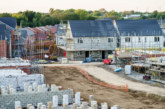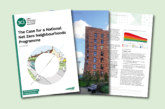Rural towns and villages are missing out on vital infrastructure and local services such as roads, schools and GP surgeries, due to an increase of almost 230% in barns and farm buildings being converted into homes without the need for planning permission over the past three years.
Latest figures show the number of agricultural to residential conversions in England has risen from 226 in 2015/16 to 743 in 2017/18 — mostly in rural areas — under the permitted development right, which allows developers to bypass the planning system.
This means councils are unable to make sure homes are built to high standards with the necessary infrastructure in place.
The Local Government Association, which represents councils in England and Wales, is concerned that rural areas in particular are not being provided with the local services or infrastructure, and in some places affordable housing, that would normally be required in any development going through the planning system.
It is calling on the Government to use the Queen’s Speech to commit to scrapping the permitted development right for all property types and for local communities to be given oversight of all new developments and building conversions in their area.
Some of the areas seeing a high number of agricultural to residential conversions in the last year include Devon (122), Kent (71), Worcestershire (56), Herefordshire (39) and Staffordshire (29).
Previously landowners could convert agricultural buildings into three new homes without the need for planning permission, but last year government extended this to allow conversions of individual agricultural buildings into five new homes.
Since this change, local areas have seen the number of conversions more than double in the space of a year from 330 in 2016/17 to 743 in 2017/18.
While the majority of permitted development conversions have seen offices turned into homes without the need for planning permission — 42,130 in three years — the LGA is warning of other ways the system is being circumvented to the potential detriment of local communities.
Councils have also seen a surge in homes being created out of storage or distribution buildings, with four times as many last year as three years ago.
Storage to residential conversions under permitted development jumped from 55 in 2015/16 to 218 in 2017/18.
In a recently released report on the future of non-metropolitan England, the LGA set out the “perfect storm” facing rural communities, highlighting the pressures placed on rural transport infrastructure and the need to ensure sufficient capacity for rural businesses to grow.
Cllr David Renard, the LGA’s planning spokesman, said: “We have concerns over the sharp rise in agricultural buildings being converted into homes without planning permission and the impact this is having on rural areas, given the lack of any requirement for developers to provide infrastructure or contribute to investment in local services such as roads or schools.
“Councils, which are approving nine in 10 planning applications, are committed to building the thousands of new homes the country needs, but these have to be of high quality and with the right infrastructure in place.
“Permitted development rules are denying councils and communities any control or oversight of this process.
“It is taking away the voice of local residents who need to be allowed to have their say over any developments in the streets and neighbourhoods where they live.
“Unless permitted development rules are scrapped, then communities face the risk of substandard housing without any of the vital supporting infrastructure and local services which residents need on a daily basis.”









